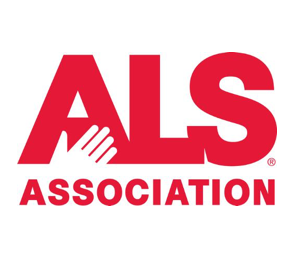There’s no question that Virgin America has embraced technology and social media. Referred to as a “snazzy airline” by Mashable, it has a plane named by hashtag (#nerdbird), was the first airline to offer Wi-Fi fleetwide and outlets near every seat, and has run promotions using social media platforms as diverse as Twitter, Foursquare, Loopt, Groupon and Klout.
Lessons from Virgin America’s social media success on a variety of platforms:
Know your audience.
“A lot of our first support was from the tech community, and everything has stemmed from that,” says Abby Lundardini, Virgin America’s director of communications. Being based in Silicon Valley, partnering with up-and-coming social media platforms – like Twitter – just made sense. The brand launched back in 2007, when social media was just taking off. Virgin’s first social accounts were set up in 2008, their social media team was created in 2009, and the company has been launching innovative social media campaigns ever since.
Jill Fletcher, Virgin’s social media manager, told Mashable “70% of our bookings come from our web channels, so our fliers are really social media savvy and tech savvy.” As a result, Virgin is quick to use new technology or platforms in the daily deals, gelocation or social networking space to reach these consumers. According to Fletcher, “we know that those types of campaigns resonate with our fliers.”
To keep their tech savvy audience happy, Virgin consistently embraces new technology on the airline, adding fleet-wide Wi-Fi before anyone else, and recently launching a re-vamp of their in-flight entertainment system.
Virgin also looks for ways to reward their audience; last year the airline partnered with Klout to provide free flights to Twitter ‘influencers.’ The plan? Find people who are already making waves in social media, convince them your brand is great, and sit back while they tell their large audiences why they should fly Virgin.
Know your voice.
Porter Gale, Virgin’s VP of Marketing, told Forbes that the brand voice is “irreverent and a little bit cheeky” to keep passengers engaged, and differentiate from the norm. “In everything we do, we try to maintain that enthusiasm and tone,” says Fletcher, and that means a consistency across all social media platforms.
Allocate more resources where you find success.
Virgin America is pretty much a superstar on Twitter. The brand was one of the launch partners for Promoted Tweets, and saw their following grow as a result. Virgin finds a high level of engagement on Twitter because “it’s quick, and it’s easy to engage,” according to Lundardini. The @VirginAmerica account facilitates a two-way conversation between the brand and followers, in addition to offering deals and tips.
Virgin has used Promoted Trends and Promoted Tweets to get the word out about #FlyMoreGiveBack, a hashtag sale that has donates $5 per booking to charity. Last year the sale led to Virgin’s fourth highest sales day, and the proceeds went to an education charity. This year, the donations will to go Stand Up To Cancer.
Virgin also hosted a Twitter scavenger hunt, using #FlyTheBeard, at a San Francisco Giants game to celebrate the company’s fourth anniversary. The Twitter feed offered photo clues and challenged fans to locate the flight attendants at the game, who were all sporting beards in honor of star pitcher Brian Wilson. The winner received Giants/Virgin swag and the chance to win a free flight.
Don’t be afraid to experiment.
“We like to do new and interesting things to amplify word of mouth buzz,” says Lundardini. Virgin is willing to take risks in social media, whether it’s related to customer care, communications or advertising.
Last August, Virgin ventured into geolocation for the first time and partnered with Loopt to offer a “2-for-1 Tacos and Tickets” promotion. The campaign coincided with the addition of two new destinations in Mexico, and once fans checked in via Loopt at either of two branded taco trucks – in San Francisco and Los Angeles – they received a digital promotional code which delivered 2-for-1 flight tickets and 2-for-$1 tacos. This results of this social media promotion? It was Virgin America’s fifth highest sales day in 2010, showing 1300 checkins in San Francisco within four hours, and proceeds from the tacos were donated to a chihuahua rescue center.
In April, the airline started offering points that were redeemable for prizes to customers who checked in to Terminal 2 in the San Francisco Airport on Facebook Places or Foursquare. (See our blog post about that campaign.)
Daily deals came next, with Virgin stepping up to become the first airline to use Groupon last February. The promotion was meant to celebrate Virgin’s new service to Chicago, and offered $77 worth of airfare for $7. When the tickets sold out in eight minutes, the results were clear; the company has participated in other daily deals offers since then, including a recent promotion with Gilt City.
Virgin America also partnered with a social meme site for the first time when it announced a new service to Orlando. Sticking with the family vacation theme (home of Disney), the airline created a photo contest for ‘akward family vacation photos’ using the site AwkwardFamilyPhotos.com. Voting revealed the ‘best’ pictures, and the winners got to fly the first Virgin America flight to Orlando with none other than Richard Branson, in full family vacation garb (Hawaiian shirt and fanny pack included.)
The results of putting these social media lessons into practice:
The brand is seeing impressive growth and engagement. “We’ve grown tremendously in not only the revenue which we bring in, but also the number of fans,” Fletcher told Mashable. “We have one of the highest growth rates on Twitter and Facebook out of any domestic airline.”

